Prabakaran had everything: territory, international support and committed fighters. Senior journalist Shyam Tekwani, who has covered the LTTE and Sri Lanka for almost three decades tracks the alarming rise and astonishing fall of a man who sought to live to fight another day, but found only death at the hands of his nemesis.
A year later, in a move that stunned his followers, Prabakaran struck against Mahathaya who he had anointed as his deputy during the war against the IPKF in 1987. Accusing him of treachery and collaborating with the Indians against him, Prabakaran placed Mahathaya in custody, liquidated most of Mahathaya’s troops and decisively crushed a potential rival to his supremacy as leader. Mahathaya was executed after a prolonged period of torture in December 1994. Yogi, whose loyalty too came under suspicion, was consigned to the doghouse to expect a similar fate. After years in anxious oblivion, he reappeared as head of the LTTE’s History Division on Black Tigers Day, the commemoration of suicide bombers, in July 2006. He spoke on the occasion and asked, “Weren’t bombs made to blow up and kill men? So why is there such a cry when only a man becomes a human bomb?” He was subsequently rehabilitated to his current position as military advisor in the Vanni. Balasingham and his wife Adele rose even more higher in their leader’s estimate. The Balasinghams — who posed no threat of any sort to their master — became the face of the organisation across Western capitals and were an essential part of all negotiating teams at various times.
THE TAMIL ‘STATE’
Prabakaran’s moment of triumph in ejecting the IPKF (March 1990) out of his domain, powered him with greater confidence. He felt vindicated in his belief that Eelam was a reality within his grasp. His surviving boys had gained invaluable experience during the thirty months of ‘vanquishing the fourth-largest army in the world’; the girls had proved their worth and were now battle-hardened; recruiting was never easier, his stock with his donors, the Tamil diaspora, was at its peak; and the media doted on him as their new darling.
It was at this point that he tightened the security around him and set about the task of constructing a state within a state. He reintroduced taxation on his population, decreed the LTTE flag as the Tamil national flag, set up courts, police stations and ‘ministries’ that oversaw agriculture, education, rehabilitation and economic development. But his main preoccupation was in developing a conventional armed force. Military traditions — a formal ranking system, uniforms, gun salutes, parades, ceremonial funerals of flagdraped cadres killed in action — became the norm. Sarongs and flip-flops gave way to smartly pressed uniforms and spit-andpolish boots. Twenty years before he acquired the half-a-dozen ZLIN-143 aircraft to boast of being the only terrorist group in the world to possess an air wing, I was led to the LTTE’s “ordnance factory” in Manipay in 1985 to witness and photograph the aircraft his “aeronautical engineers” were assembling. The fact that it had a 200cc motorcycle engine to power it did not mask his intent to attempt building a conventional Armed Force, with its land, air and sea wings. “Geographically”, he stressed at the very beginning, “the security of Tamil Eelam is interlinked with that of its seas.”
He then turned against his benefactor, the Sri Lankan president, Ranasinghe. Premadasa, who had colluded with him to evict the IPKF and kept him on his toes until Prabakaran had him killed by a suicide bomber three years later in1993.
THE DIASPORA
In his annual Heroes Day speech — that he delivers a day after his birthday — Prabakaran, in November 2006 made his first direct appeal to the diaspora in funding the ‘Final War’ he had launched in July after the European Union joined a growing list of countries that had proscribed the group. Funds were drying up. “We express our gratitude to the Tamil Diaspora, our displaced brethren living all around the world, for their contribution to our struggle and ask them to maintain their unwavering participation and support.” This was in marked contrast to rebuking them for being “quitters” and “losers” in the late 1980s. Donations, however, have not always been voluntary.
Following the crackdown on the LTTE by Canada and The European Union in 2006, the Royal Canadian Mounted Police released a report on their 4-year investigation (Operation Osaluki) into the Canadian fundraising efforts of the Tamil Tigers. The report revealed that the LTTE subjects Sri Lankan Tamils living in Canada and other Western countries to intimidation, extortion and even violence to ensure a steady flow of funds for its operations.
COSTLY MISTAKE
When Rajiv Gandhi was on the political comeback trail in May 1991, Prabakaran wasted no time in executing a pre-emptive strike. He dispatched his homegrown poet, Kasi Anandan — who had only a year ago thrilled the victorious LTTE cadres at a gathering in Trincomalee with his description of the IPKF as the Italian-Parsi Killing Force — to lull any apprehensions that anyone might have about the former Prime Minister’s security. The ruse, clearly, worked.
With international opinion against him, Prabakaran retreated into his hideouts, eased himself out of the media spotlight, only granting even rarer access to international media to lamely deny any hand in his dastardly act. He now began wearing the black thread of his cyanide vial outside his shirt in an ostentatious display of his commitment to the cause. The holster with his pistol now found place outside his camouflage shirt signaling that he was no more ‘Thambi’ (younger brother) or ‘Anna’ (elder brother) to his followers nor merely the National Leader of Tamil Eelam but the Supreme Commander of the LTTE.
The recently released photographs from the treasure trove of albums that the Sri Lankan troops found in the fleeing Prabakaran’s house are very instructive. The black string holding the vial of cyanide has disappeared in a number of images where he is with his family. Neither is his son, equally portly, seen to be wearing one even with his combat fatigues.
HUMAN SHIELDS
From the very beginning it was apparent that he would make ‘people’ his buzz word. First, declare he was on the path he had chosen for their sake, to liberate them. Second, attack the enemy over the shoulders of civilians to provoke an enraged counterattack that would kill innocents and garner him publicity at low cost. Finally, shield himself from attacks by closing all their exits at the point of his guns.
THE DESCENT
How then did an insurgency, that seized legitimate political grievances as a foundation for terrorism and sustained martyrdom by quasi-religious zealotry, fail in its objective?
From being credited as the world’s most successful and ruthless terrorist to losing nearly all of 15,000 sq.kms of territory in two years requires some doing. Both Prabakaran and the government of Sri Lanka have had their turns grabbing and then losing territory.
In July 2001, marking the anniversary of Black July of 1983, Prabakaran staged stunning attacks on the Sri Lankan Air Force base and the Bandaranaike International Airport in Colombo, wiping out half the country’s civil aviation fleet, in addition to a few military aircraft. With Sri Lanka’s army in a deadlock, the navy restrained and the air fleet neutralized, the success of this attack, once again, placed Prabakaran at the upper end of the plank that Colombo and he had been see-sawing upon for two decades.
Barely two months later, the planes that brought the twin towers crashing down in New York on September 9, laid the ground for the emergence of a new world order where the world was divided into the good guys rooting for a global war on terrorism and the bad guys who attacked governments in pursuit of their evil goals. The seed was thus sown for Prabakaran’s decline and the slow destruction of Eelam. He was beginning to get undone by an event thousands of miles away and over which he had no control.
It was not that Prabakaran did not attempt to adapt to the new world order. To shift the spotlight away from himself, he declared a ceasefire, came out of hiding, without his moustache and his falling hair dyed brilliantly black, sued for peace under Norwegian facilitation and announced his first press conference in a dozen years. His many websites removed all material that would be deemed offensive (virtual training camps where one could learn to forge a passport or make a bomb, for example) in the new environment, and wore safari suits to mould himself in the image of Nelson Mandela, the statesman he was quoting profusely on his sites and in his conversations.
His first and only international press conference (April 2002) at his administrative headquarters in Killinochchi was a disaster. His experience with the media, confined to a few one-on-one interviews with select journalists, had not prepared him for this. He seemed bewildered and clearly out of his depth facing a mixed pack of journalists whose two-day uncomfortable wait was alleviated only by the non-stop screening of LTTE propaganda videos. His image makeover, as a clean-shaven, safari-suited statesman, failed to impress anyone. Announcing his idea of peace involving the Norwegians as peacemakers, he first fumbled and then chose the safer option of avoiding all questions — mostly related to the murder of Rajiv Gandhi and his own demand for a separate state – and passed on the microphone to his interpreter Balasingham. Balasingham declared that his leader was the President and Prime Minister of Tamil Eelam and that he and Mr Prabakaran were the “same” and that he was the LTTE leader’s “voice.” This set the tone for what was to follow.
The from-the-very-beginning futile exercise took its toll on three of the four LTTE delegates. Balasingham, the “chief negotiator” was gravely ill and had to remain in Europe along with Adele for his prolonged treatment. Karuna Amman (Vinayagamoorthy Muralitharan), Prabakaran’s commander in the East, was being wooed by peacemakers to part ways with his leader. Meanwhile, the global war on terrorism was increasingly being read as the global war on Islamic terror, which meant the international community was too preoccupied to bother about non- Islamic outfits like the LTTE.
The Man Who Destroyed Eelam
The Man Who Destroyed Eelam 2
The Man Who Destroyed Eelam 4

A year later, in a move that stunned his followers, Prabakaran struck against Mahathaya who he had anointed as his deputy during the war against the IPKF in 1987. Accusing him of treachery and collaborating with the Indians against him, Prabakaran placed Mahathaya in custody, liquidated most of Mahathaya’s troops and decisively crushed a potential rival to his supremacy as leader. Mahathaya was executed after a prolonged period of torture in December 1994. Yogi, whose loyalty too came under suspicion, was consigned to the doghouse to expect a similar fate. After years in anxious oblivion, he reappeared as head of the LTTE’s History Division on Black Tigers Day, the commemoration of suicide bombers, in July 2006. He spoke on the occasion and asked, “Weren’t bombs made to blow up and kill men? So why is there such a cry when only a man becomes a human bomb?” He was subsequently rehabilitated to his current position as military advisor in the Vanni. Balasingham and his wife Adele rose even more higher in their leader’s estimate. The Balasinghams — who posed no threat of any sort to their master — became the face of the organisation across Western capitals and were an essential part of all negotiating teams at various times.
THE TAMIL ‘STATE’
Prabakaran’s moment of triumph in ejecting the IPKF (March 1990) out of his domain, powered him with greater confidence. He felt vindicated in his belief that Eelam was a reality within his grasp. His surviving boys had gained invaluable experience during the thirty months of ‘vanquishing the fourth-largest army in the world’; the girls had proved their worth and were now battle-hardened; recruiting was never easier, his stock with his donors, the Tamil diaspora, was at its peak; and the media doted on him as their new darling.
It was at this point that he tightened the security around him and set about the task of constructing a state within a state. He reintroduced taxation on his population, decreed the LTTE flag as the Tamil national flag, set up courts, police stations and ‘ministries’ that oversaw agriculture, education, rehabilitation and economic development. But his main preoccupation was in developing a conventional armed force. Military traditions — a formal ranking system, uniforms, gun salutes, parades, ceremonial funerals of flagdraped cadres killed in action — became the norm. Sarongs and flip-flops gave way to smartly pressed uniforms and spit-andpolish boots. Twenty years before he acquired the half-a-dozen ZLIN-143 aircraft to boast of being the only terrorist group in the world to possess an air wing, I was led to the LTTE’s “ordnance factory” in Manipay in 1985 to witness and photograph the aircraft his “aeronautical engineers” were assembling. The fact that it had a 200cc motorcycle engine to power it did not mask his intent to attempt building a conventional Armed Force, with its land, air and sea wings. “Geographically”, he stressed at the very beginning, “the security of Tamil Eelam is interlinked with that of its seas.”
He then turned against his benefactor, the Sri Lankan president, Ranasinghe. Premadasa, who had colluded with him to evict the IPKF and kept him on his toes until Prabakaran had him killed by a suicide bomber three years later in1993.
THE DIASPORA
In his annual Heroes Day speech — that he delivers a day after his birthday — Prabakaran, in November 2006 made his first direct appeal to the diaspora in funding the ‘Final War’ he had launched in July after the European Union joined a growing list of countries that had proscribed the group. Funds were drying up. “We express our gratitude to the Tamil Diaspora, our displaced brethren living all around the world, for their contribution to our struggle and ask them to maintain their unwavering participation and support.” This was in marked contrast to rebuking them for being “quitters” and “losers” in the late 1980s. Donations, however, have not always been voluntary.
Following the crackdown on the LTTE by Canada and The European Union in 2006, the Royal Canadian Mounted Police released a report on their 4-year investigation (Operation Osaluki) into the Canadian fundraising efforts of the Tamil Tigers. The report revealed that the LTTE subjects Sri Lankan Tamils living in Canada and other Western countries to intimidation, extortion and even violence to ensure a steady flow of funds for its operations.
COSTLY MISTAKE
When Rajiv Gandhi was on the political comeback trail in May 1991, Prabakaran wasted no time in executing a pre-emptive strike. He dispatched his homegrown poet, Kasi Anandan — who had only a year ago thrilled the victorious LTTE cadres at a gathering in Trincomalee with his description of the IPKF as the Italian-Parsi Killing Force — to lull any apprehensions that anyone might have about the former Prime Minister’s security. The ruse, clearly, worked.
For Someone Who Pioneered The Use – And Masterminded Remarkable Innovations – Of Suicide Bombers, Prabakaran’s Black Tigers Seem To Have Reached A Dead EndExcept that Prabakaran’s fool-proof plan did not count on having his photographer killed with the evidence against him intact on his body. The murder of Rajiv Gandhi by the world’s first woman suicide bomber set in motion a process that has finally come to destroy his ambition. India proscribed the group and though it took the United States six years to follow the lead and the 9/11 attacks to give the proscription some teeth, the new security climate induced other passive supporters of the LTTE in Western capitals to ban the outfit in their countries.
With international opinion against him, Prabakaran retreated into his hideouts, eased himself out of the media spotlight, only granting even rarer access to international media to lamely deny any hand in his dastardly act. He now began wearing the black thread of his cyanide vial outside his shirt in an ostentatious display of his commitment to the cause. The holster with his pistol now found place outside his camouflage shirt signaling that he was no more ‘Thambi’ (younger brother) or ‘Anna’ (elder brother) to his followers nor merely the National Leader of Tamil Eelam but the Supreme Commander of the LTTE.
The recently released photographs from the treasure trove of albums that the Sri Lankan troops found in the fleeing Prabakaran’s house are very instructive. The black string holding the vial of cyanide has disappeared in a number of images where he is with his family. Neither is his son, equally portly, seen to be wearing one even with his combat fatigues.
HUMAN SHIELDS
From the very beginning it was apparent that he would make ‘people’ his buzz word. First, declare he was on the path he had chosen for their sake, to liberate them. Second, attack the enemy over the shoulders of civilians to provoke an enraged counterattack that would kill innocents and garner him publicity at low cost. Finally, shield himself from attacks by closing all their exits at the point of his guns.
Should Prabakaran Be Forced To Feed On Cyanide, It Would Mean The Destruction Of His Fantasy And The Organisation He Has So Brutally Cultivated Around HimselfThe bulk of LTTE’s attacks against the IPKF were initiated around the core strategy of using civilians as shields. The IPKF helicopter gunship attack in Chavakachcheri was one such classic example. The LTTE positioned its gunmen in the most crowded part of the town — the market — to fire provocatively in the directions of the choppers that were flying at a safe distance from ground fire. At the Chavakachcheri morgue where families of victims were hurling anti-Indian abuses at me, a middle-aged woman took me aside. Apologising for the hostility of the mourners, she muttered, “Hitler killed not his own people, but Jews. But Prabakaran is killing Tamil people.” Civilians as human shields clearly appears to be a central part of Prabakaran’s strategy to escape from his present entrapment.
THE DESCENT
How then did an insurgency, that seized legitimate political grievances as a foundation for terrorism and sustained martyrdom by quasi-religious zealotry, fail in its objective?
From being credited as the world’s most successful and ruthless terrorist to losing nearly all of 15,000 sq.kms of territory in two years requires some doing. Both Prabakaran and the government of Sri Lanka have had their turns grabbing and then losing territory.
In July 2001, marking the anniversary of Black July of 1983, Prabakaran staged stunning attacks on the Sri Lankan Air Force base and the Bandaranaike International Airport in Colombo, wiping out half the country’s civil aviation fleet, in addition to a few military aircraft. With Sri Lanka’s army in a deadlock, the navy restrained and the air fleet neutralized, the success of this attack, once again, placed Prabakaran at the upper end of the plank that Colombo and he had been see-sawing upon for two decades.
Barely two months later, the planes that brought the twin towers crashing down in New York on September 9, laid the ground for the emergence of a new world order where the world was divided into the good guys rooting for a global war on terrorism and the bad guys who attacked governments in pursuit of their evil goals. The seed was thus sown for Prabakaran’s decline and the slow destruction of Eelam. He was beginning to get undone by an event thousands of miles away and over which he had no control.
It was not that Prabakaran did not attempt to adapt to the new world order. To shift the spotlight away from himself, he declared a ceasefire, came out of hiding, without his moustache and his falling hair dyed brilliantly black, sued for peace under Norwegian facilitation and announced his first press conference in a dozen years. His many websites removed all material that would be deemed offensive (virtual training camps where one could learn to forge a passport or make a bomb, for example) in the new environment, and wore safari suits to mould himself in the image of Nelson Mandela, the statesman he was quoting profusely on his sites and in his conversations.
His first and only international press conference (April 2002) at his administrative headquarters in Killinochchi was a disaster. His experience with the media, confined to a few one-on-one interviews with select journalists, had not prepared him for this. He seemed bewildered and clearly out of his depth facing a mixed pack of journalists whose two-day uncomfortable wait was alleviated only by the non-stop screening of LTTE propaganda videos. His image makeover, as a clean-shaven, safari-suited statesman, failed to impress anyone. Announcing his idea of peace involving the Norwegians as peacemakers, he first fumbled and then chose the safer option of avoiding all questions — mostly related to the murder of Rajiv Gandhi and his own demand for a separate state – and passed on the microphone to his interpreter Balasingham. Balasingham declared that his leader was the President and Prime Minister of Tamil Eelam and that he and Mr Prabakaran were the “same” and that he was the LTTE leader’s “voice.” This set the tone for what was to follow.
Prabakaran will patiently wait for a slip onColombo’s part and any ensuing security lapses to stage counter-attacks. He could potentially claw his way back if allowedAfter six rounds of talks for peace between September 2002 to March 2003 across four countries, Prabakaran was back to what he had perfected over the years since the Thimpu talks in 1985 — stonewall, provoke and renege on an agreement and fully lay the blame for the breakdown of talks on the other party.
The from-the-very-beginning futile exercise took its toll on three of the four LTTE delegates. Balasingham, the “chief negotiator” was gravely ill and had to remain in Europe along with Adele for his prolonged treatment. Karuna Amman (Vinayagamoorthy Muralitharan), Prabakaran’s commander in the East, was being wooed by peacemakers to part ways with his leader. Meanwhile, the global war on terrorism was increasingly being read as the global war on Islamic terror, which meant the international community was too preoccupied to bother about non- Islamic outfits like the LTTE.
The Man Who Destroyed Eelam
The Man Who Destroyed Eelam 2
The Man Who Destroyed Eelam 4
















































































































































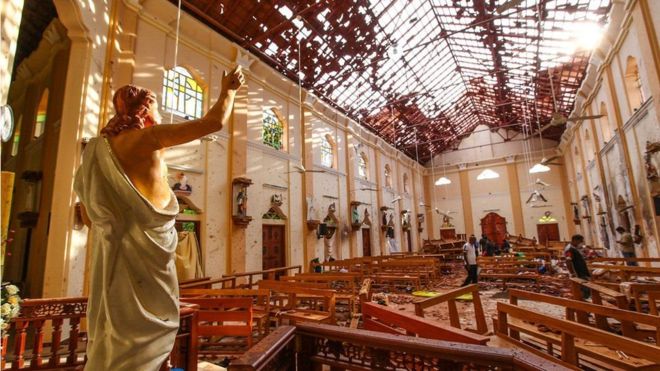















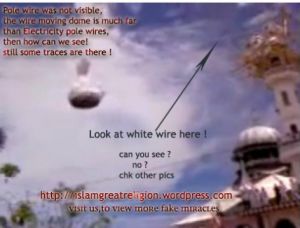



















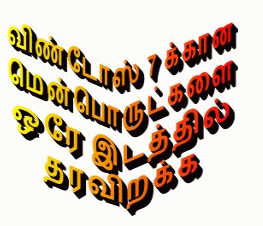













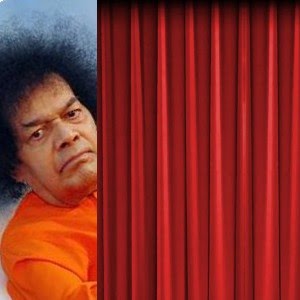













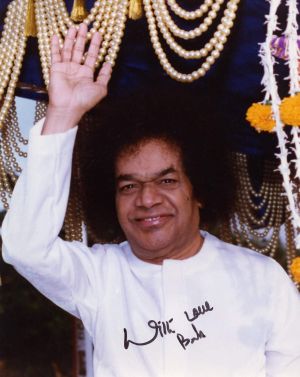


























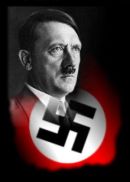





.jpg)
கருத்துகள் இல்லை:
கருத்துரையிடுக